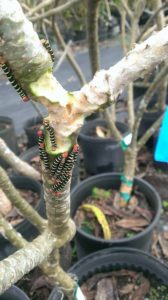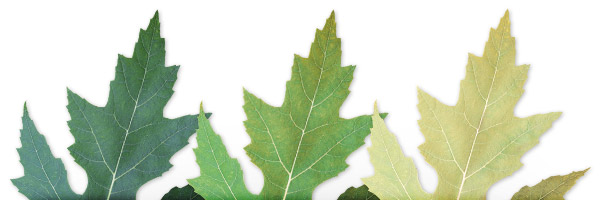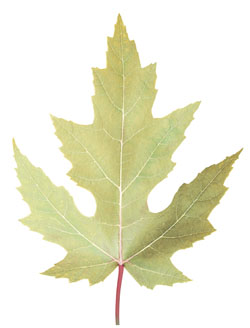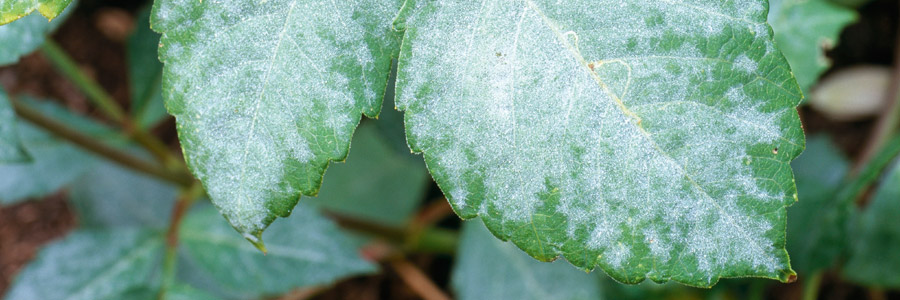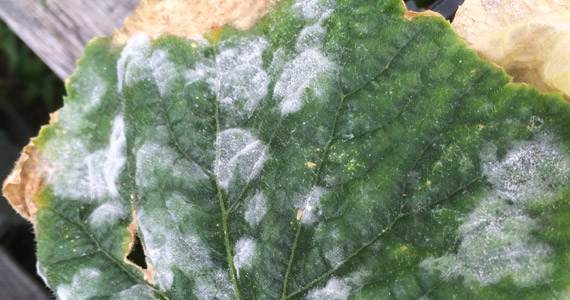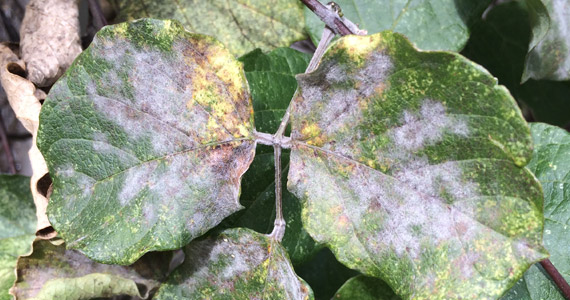(FMV) Virus-causing color break in Plumerias
Based upon visual observation of infected plumeria plants from various places for a number of years, it seems that Frangipani Mosaic Virus (FMV) has a minimal effect on the growth and the health of most plumerias with the exception of severe cases in a few cultivars. Its symptoms may include, e.g., leaf malformation, mottled leaf, and/or splash or color break (CB), especially on the petals. Some plumeria trees appear normal with only an occasional CB on the petals, which is attractive to some people.
From my point of view, however, the color break is unacceptable since it distorts the original colors of flowers. In addition, unlike other diseases, it is incurable, and the virus that resides in the infected plant may accidentally spread to other plumeria trees somehow, and finally, the whole collection may all be infected.
According to ICTVdb, the FMV transmitted by mechanical inoculation not involving a vector.
Suggested reading related to Frangipani Mosaic Virus: click…DPVWeb or
https://www.ncbi.nlm.nih.gov/pubmed/26239043
Author(s) : Alok Kumar; Vikas Solanki; Verma, H. N.; Bikash Mandal
Author Affiliation: Advanced Centre for Plant Virology, Division of Plant Pathology, Indian Agricultural Research Institute, New Delhi, 110 012, India.
Author Email: leafcurl@rediffmail.com
Journal article: Virus Genes 2015 Vol.51 No.2 pp.310-314 ref.14
Abstract: Frangipani mosaic virus (FrMV) is known to infect frangipani tree (Plumeria rubra f. acutifolia) in India but the virus has not been characterized at the genomic level and diagnosis is not available. In the present study, an isolate of FrMV (FrMV-Ind-1) showing greenish mosaic and vein-banding symptoms in P. rubra f. acutifolia in New Delhi was characterized based on host reactions, serology, and genome sequence. The virus isolate induced local symptoms on several new experimental host species: Capsicum annuum(chilli), Nicotiana benthamiana, Solanum lycopersicum and S. melongena. N. benthamianacould be used as an efficient propagation host as it developed systemic mottle mosaic symptoms all around the year. The genome of FrMV-Ind-1 was 6643 (JN555602) nucleotides long with genome organization similar to tobamoviruses. The Indian isolate of FrMV shared a very close genome sequence identity (98.3%) with the lone isolate of FrMV-P from Australia. FrMV-Ind-1 together with FrMV-P formed a new phylogenetic group i.e. Apocynaceae-infecting tobamovirus. The polyclonal antiserum generated through the purified virus preparation was successfully utilized to detect the virus in field samples of frangipani by ELISA. Of the eight different tobamoviruses tested, FrMV-Ind-1 shared distant serological relationships with only cucumber green mottle mosaic virus, tobacco mosaic virus, bell pepper mottle virus, and kyuri green mottle mosaic virus. RT-PCR based on coat protein gene primer successfully detected the virus in frangipani plants. This study is the first comprehensive description of FrMV occurring in India.
ISSN: 0920-8569
DOI: 10.1007/s11262-015-1228-3
URL: http://link.springer.com/article/10.1…
Record Number: 20153349035
Publisher: Springer
Location of publication: Dordrecht
Country of publication: Netherlands
Language of text: English
Language of summary: English
| How to Avoid FMV Virus in Plumerias
Note: There is no effective treatment for FMV transmitted by mechanical inoculation not involving a vector.
Viral-contaminated cutting tools used in grafting and pruning are likely the most common means of FMV transmission. Unfortunately, it is how this particular virus spreads rapidly and covertly in plumerias, especially in Thailand
Nowadays, symptoms are commonly seen in plumerias which are sold in the markets everywhere. Some virused plumerias may look normal, but the symptoms generally appear in a later stage. Thus it is important to address this issue to increase growers’ awareness, to keep the virus under control, and to save all great plumeria cultivars from being infected.
Follow these Practices to prevent the spread of FMV
1. In an attempt to keep the whole plumeria collection virus-free, newly acquired plumerias should be isolated over a period of time to observe or check (test) for the presence of the virus.
2. All FMV-infected plants should be separated from the rest of the collection and/or destroyed.
3. Using a sterilized cutting tool is also the key to preventing the spread of the FMV, which may be present in the plumeria trees growing in the garden, to the rest of the collection.
4. My routine practice of pruning plumerias in the garden is to carry as many sterilized knives as possible with me and use only one knife per plumeria plant. They are then sterilized in boiling water for further use.
5. Plumerias with the virus should not be allowed to be registered as a new cultivar based upon the appearance of the flowers with the color break. It is just a diseased plant, not an innovative one. |
